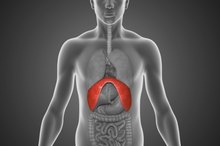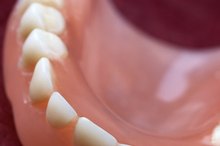How to Relax Muscle Spasms in the Throat
Muscle spasms in the throat are caused by an overly contracted cricopharyngeus muscle in the esophagus. Under normal conditions, this muscle remains in a contracted state until you swallow, and it then relaxes to let food or saliva pass through. An overly contracted cricopharyngeus muscle can cause sensations of choking or having something stuck in your throat, or even make it increasingly difficult for you to swallow food. Depending on the severity of the problem, there are several actions you can take to relax the muscles and relieve the uncomfortable sensation or inability to swallow.
If you are experiencing serious medical symptoms, seek emergency treatment immediately.
Reduce stress and anxiety. The most common known causes or aggravators of cricopharyngeus spasm (which is characterized by the feeling of something being stuck in your throat or a sort of choking sensation) include anxiety, stress, fatigue and fear. And the sensation caused by the muscle spasms in the throat tend to heighten these feelings more. If you've been diagnosed with cricopharyngeus spasm, however, you have no reason to fear a more serious disease or not being able to breath. One of the easiest ways to relax the cricopharyngeus muscle is to stop worrying about the sensation; in itself, it will not hinder your breathing or cause you anything other than discomfort.
How to Get Rid of the Lump in Your Throat
Learn More
Drink warm water. Again, in the case of cricopharyngeus spasm, both eating and drinking actually relax the muscle since its function is to relax when you swallow. Drinking warm water is recommended because it will not interfere with a healthy diet.
Take medications. Flexeril (cyclobenzaprine HCl), a muscle relaxant, is one option for people diagnosed with cricopharyngeus dysfunction, characterized by increasing difficulty in swallowing. Valium (diazepam) can be used to reduce anxiety, which aggravates the symptoms in cricopharyngeus spasm, or as a muscle relaxant.
4 Exercises to Strengthen the Esophagus Muscle and Improve Swallowing
Learn More
Get an injection of Botox (botulinum toxin type A) into the cricopharyngeus muscle if you've been diagnosed with cricopharyngeus dysfunction. Botox reduces tonacity (over-contraction) in muscles.
Undergo corrective surgery if you've been diagnosed with cricopharyngeus dysfunction. There are two options in terms of surgery. A cricopharyngeal myotomy is traditional surgery in which the cricopharyngeal muscle is cut in order to make it permanently relaxed. This is done through a small incision in the neck under a general anesthetic and requires a hospital stay of about one night. Endoscopic surgery is performed through the mouth and uses a laser to divide the muscle from its inside surface. This type of surgery can be performed on an out-patient basis, or patients may be required to be hospitalized for one night.
Tips
Cricopharyngeus spasm stops on its own, usually within 2 weeks to 3 months.
Warnings
It's important to get a professional diagnosis of the neck and throat before starting treatment.
Botox injections (mentioned in Step 4) must be repeated every 3 to 4 months, and the results vary greatly from patient to patient.
Related Articles
Writer Bio
Laura Shapiro has been a writer all her life. In the most recent past she focused on technical articles for Artech Publishing in Milan, Italy, and is currently writing about a variety of topics for One Article a Day and Demand Studios.








